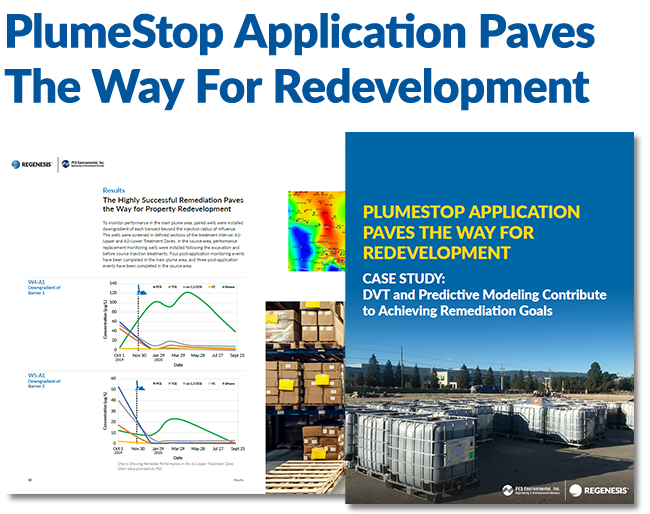This case study reviews a contaminated chlorinated solvent site in northern California where advanced design verification testing and predictive modeling methods were used to guide a remarkably successful in-situ remediation effort. Complete reduction of chlorinated volatile organic compounds (CVOCs) in the treatment areas and remedial objectives achieved allowed redevelopment of the property.
Case study highlights:
- Design Verification Testing (DVT) from REGENESIS contributes to achieving remediation goals
- Flux-based predictive modeling used to optimize remediation to meet two-year timeline
- Highly successful remediation solution using colloidal technologies paves the way for property redevelopment
The primary CVOC chemicals of concern were tetrachloroethene (PCE) and degradation products, trichloroethene (TCE), cis-1,2-dichloroethene (cis-DCE), and vinyl chloride (VC). PES Environmental, Inc. (PES) of Novato, California, was selected by the developer as their Environmental Consultant for this project. When PES engaged REGENESIS on this project, a better understanding of contaminant flux was needed. By understanding the contaminant flux, a cost-effective remediation plan could be designed, specifically engineered to achieve a project goal. In this case, the goal was to fully remediate the CVOCs in the target treatment areas within two years following application of the treatment approach.


